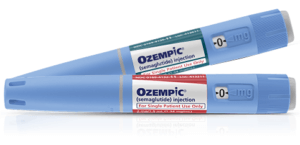Coronary artery disease is one of the most common forms of cardiovascular disease. It happens when fatty deposits called plaque build up in the arteries that supply blood to the heart muscle. This can limit blood flow and may cause a heart attack, heart failure, or even sudden cardiac arrest. While many people hope for a permanent cure, the reality is more complicated.
There is currently no complete cure that removes the condition entirely. However:
- Medications can slow or stop the build-up of plaque and reduce the risk of complications
- Lifestyle changes such as regular physical activity and avoiding an unhealthy diet can prevent the disease from getting worse
- Procedures such as stents or bypass surgery can restore blood flow to the heart or blood vessel affected
So while coronary artery disease cannot be cured, it can be managed very effectively, allowing many people to live long, healthy lives.
About coronary artery disease, heart failure and heart attack
Coronary artery disease is often the first stage in a chain of serious health problems. When arteries become narrowed, the heart muscle does not get enough oxygen. Over time, this can lead to heart failure, when the heart is too weak to keep pumping blood properly. A complete blockage may cause a heart attack, which damages the muscle itself.
Risk factors include high blood pressure, smoking, diabetes, kidney disease, and family history. Even stress and lack of exercise can contribute. Doctors use tests such as stress tests or imaging scans to see how well the heart is working and how severe the disease may be.
How does coronary artery disease lead to a heart attack?
In coronary artery disease, plaque narrows the arteries. If a piece of plaque breaks off, it can form a blood clot. This may suddenly block the artery completely. When this happens, part of the heart muscle does not receive oxygen and becomes damaged — this is what is called a heart attack. Quick treatment is essential to restore blood flow and limit damage to the heart muscle.
About the effects of coronary artery disease
What effects does coronary artery disease have?
The effects depend on how much the arteries are narrowed. Some people may feel chest pain or shortness of breath during physical activity. Others may develop more severe conditions such as heart failure or peripheral artery disease. In advanced cases, it can lead to sudden cardiac arrest, which is life-threatening if not treated immediately.
Which patients can coronary artery disease with heart attack be approved for?
The FDA approves many medications to reduce the risks linked to coronary artery disease. Patients with risk factors such as high blood pressure, high cholesterol, or a history of heart attack are often prescribed drugs like statins, blood thinners, or medicines to control blood pressure. Surgical treatments such as bypass or stents are also approved for people with severe blockages or repeated chest pain.
Conclusion
Key takeaways about coronary artery disease:
- There is no complete cure, but effective management is possible
- Lifestyle choices such as exercise and a healthy diet play a major role
- Medicines and procedures can help restore blood flow and protect the heart muscle
- Ongoing care reduces the risks of heart failure, heart attack, and sudden cardiac arrest
- With the right treatment, many patients live long, active lives
Frequently asked questions about coronary artery disease for heart attack
Can a weak heart become strong again?
In many cases, yes. If the heart muscle has not been permanently damaged, it can recover strength with proper treatment. Medicines, cardiac rehabilitation, and healthy lifestyle habits can help the heart pump more effectively. Severe damage from a heart attack may not fully heal, but the heart can often adapt and improve with time.
How to get rid of plaque build-up in arteries?
There is no way to completely remove plaque once it forms. However, treatments can stop plaque from growing and stabilize it. Statins lower cholesterol, while blood pressure drugs reduce strain on the arteries. A healthy lifestyle with exercise and balanced nutrition also slows progression and may even reduce some of the fatty material.
What heart disease is not curable?
Most forms of cardiovascular disease, including coronary artery disease, cannot be completely cured. They can be managed with medicines, surgery, and lifestyle adjustments. Conditions like advanced heart failure may require devices or even a heart transplant, as they cannot be reversed.
How fast does heart failure progress?
The speed of progression varies. For some people, heart failure remains stable for many years. For others, it can worsen quickly, especially if blood pressure is uncontrolled or another heart attack occurs. Regular check-ups and adherence to treatment plans are essential to slow the course of the disease.
What is the number one cause of clogged arteries?
The biggest cause is atherosclerosis, the build-up of cholesterol-rich plaque in the artery walls. Risk factors include high blood pressure, diabetes, smoking, and poor diet. Genetics also play a role, as people with a family history of heart disease are more likely to develop it.
What age do people get heart disease?
Heart disease can appear at any age, but the risk increases with age. Men are more likely to develop it after age 45, while women often see increased risk after menopause, usually after age 55. Lifestyle choices and family history can bring on heart disease earlier in life.
Is a stroke a cardiovascular disease?
Yes. A stroke happens when blood supply to part of the brain is blocked or a vessel bursts. Like a heart attack, it is caused by problems in the heart or blood vessel system. Both stroke and coronary artery disease are forms of cardiovascular disease, and they share many of the same risk factors.
What are the warning signs of clogged arteries?
Common warning signs include chest pain, shortness of breath, fatigue, and sometimes dizziness. Pain in the arms, jaw, or back can also signal reduced blood flow. In many cases, people do not notice symptoms until the blockage becomes severe, which is why regular check-ups are important for those with risk factors.
What are the first signs of a weak heart?
The earliest signs may include fatigue, swelling in the legs or ankles, and shortness of breath during everyday activities. These symptoms show that the heart is struggling with pumping blood. Identifying and treating these signs early can slow or prevent progression into more serious heart failure.















